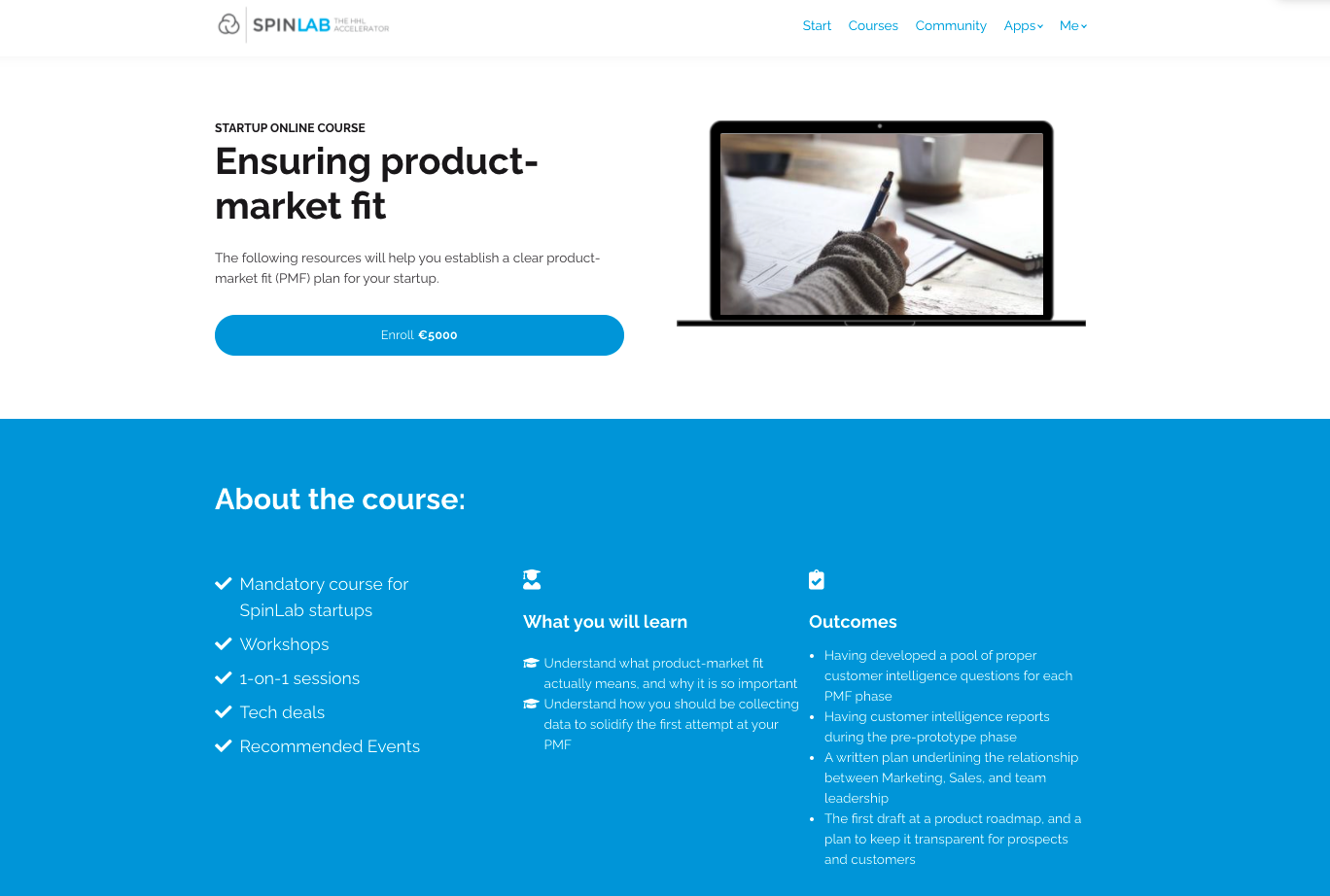Acquiring new customers and generating revenue is the fuel to keep a company running.
It therefore creates pressure on the sales representative as they are in charge of generating these revenues by acquiring new customers. In addition, they have got to deal with rejection in their daily routines, which is mentally challenging.
Anxiety, pressure and depression are rather common around sales people. Especially when inexperienced people start working, maybe as their first job, in a sales department or even worse: being the only salesperson in a startup.
I know this, as I have also been in this situation. Working for a startup is always special, as everyone in the company is the key to success and individuals don’t get lost in the crowd like in big companies.
If one colleague doesn’t perform well, this can take the whole company at risk. Especially sales is the driving force in young startups as revenue extends the runway of the company.
So, how can you make B2B sales easier but not forget about the goals you set for yourself and the ones you need to achieve? As I have got a very curious nature, I applied gamification to my sales routines with simple exercises, as well used some psychological hacks for my conversation with future customers.
Here are some of the tricks and tips I used when I started working in B2B sales.
Make a b2b sales checklist with different colors for yes and no
When you start you need to find your flow, your own way of reaching out to customers
Rejection from the customers’ side is common as they quickly get the notion that you are inexperienced, sometimes just by the tonality of your voice or insecurities. When you start to call potential customers to introduce yourself and your solution, it helps to have a script.
A script is a standardized protocol or checklist that structures your call and helps you to give and receive all the information you need to qualify that customer.
/checklist.jpg?width=800&name=checklist.jpg)
This will help you to have a feeling about how to introduce yourself and which words to use in the customer’s business context.
You will face a lot of rejections along the way. But never forget, that every no brings you closer to a yes. So make that journey visible.
Use different colors and make lines on a piece of paper. For example, use a black line for a no and a green for a yes.
Then try to get the green lines closer together. This visible feedback can help you improve your personal KPI and lower your rejection rate.
The checklist also should make you think also how you can get them closer. Is it your introduction into the call, is it the position your potential customer has, is it the time you are calling? There are many variables you can easily change.
Never forget to also keep track of this with the help of your CRM system.
As in a game, success becomes visible and in order to get better you think about strategies and new techniques to become better at the game.
Like in competitive video games, even small gains make you better and get you closer to your personal goals and your next customer. In addition to new strategies, you gain experience and practice along the way.
Playing the “Yes, indeed!”-game
The “Yes, indeed!”-game is a good exercise and helps for you to get more information about the client and their needs.
Here is how it works: In a conversation, repeat the information, phrase it as a question but don't give feedback or judge their information.
Try to get a “Yes, indeed!” as a response from the other person. In most cases, they will also continue talking, feeling understood and acknowledged.
It creates a positive environment for the person you reach out to and increases the person’s participation in the conversation. The aim is to let the person talk so you can get more information.
It also gives you time to think about the next steps while creating a positive environment for the person you reach out to. You should mainly use it in situations where it gives you additional and valuable information.
When you don’t really know how to continue or what to say next, use it anyway, if you still have some time you can afford for this client. Maybe there is information for you to use in the future,
Talk with your colleagues about progress, plans & pains
Establish regular meetings with your team. Even though you may be the only person working in sales it is essential that you talk with your colleagues about progress, plans & pains.
Talk not only about KPIs but talk about qualitative information besides that quantitative stuff. Share your progress but also your problems, it is not a sign of weakness.
Show that you want to approve and give your colleagues the chance to share their experiences. By the way, macho culture, sexism and also lack of diversity leads to less productivity.
Create a diverse team and an atmosphere of psychological safety. This will lead to a better performance as a study by McKinsey shows. Create a playbook as a central resource. This makes it easier to deal with sticky situations and also helps to on-board new colleagues. Do a sales retrospective on a weekly basis to discuss what works, what doesn’t and define action to take until the next sales retrospective. Talking with your colleagues about your work helps you to reflect on it.
/pain.jpg?width=800&name=pain.jpg)
You don’t know everything – and that’s ok
In a conversation with a prospect, even in a first call, don’t try to answer every question by them especially if you don’t know the answer.
The first call is to clarify your qualification criteria to check if the prospect can become a sales accepted opportunity. It is ok to acknowledge towards the prospect that you don’t know an answer to a question.
This is a good way to follow-up with them with a person from your team who knows the answer. It is not a showstopper, as it gives you an opportunity to follow-up with valuable information and it already shows interest from the customer’s side.
A good onboarding process in the company is essential for this to work. Especially in startups, new hires should of course know about the solutions, the values, the processes but also about their colleagues and their skills. Otherwise, they don’t have a chance for a valuable follow-up with their prospects.
In your presentation, you can also make use of studies, testimonials and analyst reports to give insights on the problem, the market you operate in and of course the values of your solution.
Having voices from outside the companies supporting your message on the one hand creates a distance between you as a person and the information you want to give to the customer.
On the other hand, it gives the customer something to work with. When they need to discuss your solution and proposed value with their manager or team, they don’t just take the information given to them but “that salesperson” but also from satisfied customers and industry experts.
Make sure that the competition does not come off too well in the studies you use in your presentation, otherwise the prospect could wander off.
Making decisions on the spot
On the other hand, startups usually have got a small team. When being in a meeting with a potential client, decisions can be made on the spot, because of the lack of a hierarchy or complex internal selling processes.
They are flexible in most situations in terms of timing and pricing. Especially the pricing is a flexible element, as startups are often trying to find the right pricing model.
Of course, you should also get paid for the manpower you invest into a client, but when it comes to licensing your solution for a steady cash flow from your client, you also need to find a right price for the value you provide.
Startups can make assumptions on this based on online material or feedback from investors but need to falsify or verify it in the field.
/do.jpg?width=800&name=do.jpg)
Here the fast decision-making process also comes into play. The above-mentioned flexibility in regard to less complex internal processes gives the startup the opportunity to work at the client’s pace. Bigger clients are more likely to be slower than speed boat-like startups.
Between different stages in the sales funnel coming closer to the closing of the deal, startups can make changes to their product roadmap in the time the client needs to respond to prior questions.
You are able to deliver faster than they are used to and might be able to ship a feature you have committed to early that might not have been developed yet. The difference in speed is a great advantage for the startup to directly address the customer’s needs.
Most likely, the product is less complex than already existing solutions by bigger competitors, so individual changes can be implemented way faster.
Also, the focussed and limited portfolio is a blessing to the potential client for a simple reason: The startup doesn’t try to upsell to another product or higher tier of their solution, simply because there is nothing to sell except more man-days.
In addition, a lower complexity of the product with a focussed value proposition also avoids a technology lock-in. This is a good thing for the customer as they don’t need to fear a gigantic integration project on the one hand and get rid of your solution rather easily on the other.
For you, it is a positive thing because you can avoid a long and resource-intensive integration process and use it as an argument against corporates who compete for the same project.
Especially big software corporations often force the client to make changes to their existing processes to implement their solution to have the benefit that they provide with the “correct application” of their solution. Whereas startups focus to fit in into the current infrastructure. Of course, all these arguments can also be used by corporations against you, as corporate arguments can be used against them.
Be aware of objections addressing this unfair game to strengthen your stand. Get feedback from the client and your colleagues to build a play to easily address objections in the future.
Where is my mind?
As you will also face a lot of rejection and stress in your jobs, you have to care about your mental health. Try to exercise or take time for a daily walk. Don’t forget about your personal relationship and try to obtain a work-life balance instead of integrating your work into your daily routines.
Our alumni startup Mindance has got some tips for you for a more relaxed life.
The way to get good is by doing the thing
To be honest, the secret is, that there is no secret. You have to put a lot of hard work and really find your own way on how to address people, how to pitch your product, how to close the deal – and that's very important.
You have to feel comfortable to sell your solution. You have to be consistent and that's really hard work. So, please find your perfect way on how to do sales and how to do sales for a long time. The sales cycles in B2B sales are longer than the on-the-spot-decisions that can occur in B2C sales.
/doit.gif?width=617&name=doit.gif)
Keep that in mind not only for your expectations towards your success or commission but also for your financial planning.
When it comes to sales strategies and techniques, make it simple. As I mentioned, there is no secret sauce deep down the rabbit hole.
It is people’s business on the one hand, so you have to build a relationship of trust and values. On the other hand, it is also about the numbers in terms of customers, deals, and of course revenue.
The one helps with the other. Don’t try to find the secret recipe with self-proclaimed gurus on the internet trying to sell you courses on how to close big-volume accounts. Use basic strategies that you can get behind to build up your own sales approach. The key simple is deliberate practice and not some kind of super high-level meta execution or secret formula.
Asking for help is good, mentoring is good to overcome obstacles, but in the end it is all about the things you really do and report on. I hope the things mentioned above will help you to make B2B sales easier for you.







/RootCamp_Logo-Ecosystem.png?width=200&name=RootCamp_Logo-Ecosystem.png)
/Bitroad_Logo-Ecosystem.png?width=200&name=Bitroad_Logo-Ecosystem.png)



/White%20Versions/stadt_leipzig_white.png?width=130&name=stadt_leipzig_white.png)
/lfca_white.png?width=119&name=lfca_white.png)

/White%20Versions/sachsen_signet_white.png?width=65&height=79&name=sachsen_signet_white.png)